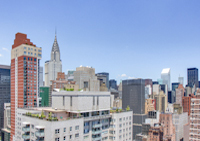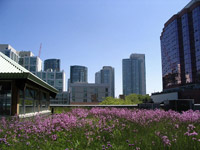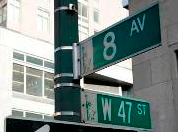 Insatiable. That’s one word to describe it. While renting an apartment in Manhattan is not everybody's cup of tea, demand continues to be high while inventory continues to be low. According to the U.S. Census, the population in Manhattan currently hovers at around 1.6 million residents. However, this number neglects to factor in the other 2.4 million commuters, day-trippers, hospital patients, tourists and students who may pass through Manahttan at any given point during the work day, reported the Rudin Center for Transportation and Management at New York University. And on major holidays and special events such as the Macy’s Day Thanksgiving Day Parade, that number easily surpasses 5 million. At the current rate, the population density in Manhattan could rival that of Hong Kong’s by as early as 2030.
Insatiable. That’s one word to describe it. While renting an apartment in Manhattan is not everybody's cup of tea, demand continues to be high while inventory continues to be low. According to the U.S. Census, the population in Manhattan currently hovers at around 1.6 million residents. However, this number neglects to factor in the other 2.4 million commuters, day-trippers, hospital patients, tourists and students who may pass through Manahttan at any given point during the work day, reported the Rudin Center for Transportation and Management at New York University. And on major holidays and special events such as the Macy’s Day Thanksgiving Day Parade, that number easily surpasses 5 million. At the current rate, the population density in Manhattan could rival that of Hong Kong’s by as early as 2030.
The population in Manhattan was at its densest back in the 1910s with over 2.3 million residents, many of whom were situated in the city's 90,000 windowless, tenement rooms. It wouldn’t be until the “great flight to suburbia” of the 1980s when the population dropped back down to 1.4 million. According to the Population Division at the New York’s Department of City Planning, we should expect to see 220,000 to 290,000 new residents or roughly one new for every six current residents by 2030.
While the island of Manhattan definitely still has room to grow and the rental inventory could increase by late 2013, one can’t help but wonder if the cost warrants the benefits and whether new residential developments will happen fast enough to accommodate the growth in Manhattan. So what does this all mean for luxury rentals in Manhattan though? To start, apartments for rent that are focused around major public transportation hubs will be in greater demands than ever. While the expansion of the Second Avenue subway line and the extension of the 7 train to West 34th Street and Eleventh Avenue could alleviate some of the congestion, it certainly won’t be enough. “The system is at capacity all the time, except at night,” said Sarah Kaufman, a transportation and data expert who recently left the Metropolitan Transit Authority to conduct research at N.Y.U.
Regardless if developers are building up, out or down under, luxury rentals in Manhattan are a commodity. Areas like West Chelsea, the Far West Side, West 125th Street, south of Delancey Street and Hudson Yards (where 18,000 new apartments are already in the works) are all still fertile neighborhoods with rentals development potential. Once those neighborhoods have been exhausted and given the recent success that is Battery Park City, the logical move would be to expand Lolo (Lower Lower Manhattan). Essentially, what the city would be creating is “a brand-new neighborhood, built from landfill in the harbor connecting Lower Manhattan to Governors Island and beyond, with blocks of skyscrapers, new subway lines, and waste-to-energy and desalination plants.”
What was once a concern of the past in Manhattan and currently in other metropolitan cities around the world like Hong Kong and Tokyo, density control may not be all that far into Manhattan's future. As Manhattan struggles to accommodate the incoming wave of immigrants, both domestic and international, providing access to clean water, managing power consumption, garbage disposal and regulating transportation will no doubt place a great burden on the city’s resources and citizens.
“Clearly, nobody wants to live in a claustrophobic warren of vertical slums. But what, ultimately, do New Yorkers want?” Amy O’Leary nicely concluded. “Like most things that are a matter of compromise and desire, it comes down to another simple question: Just how badly do you want what you want?”





